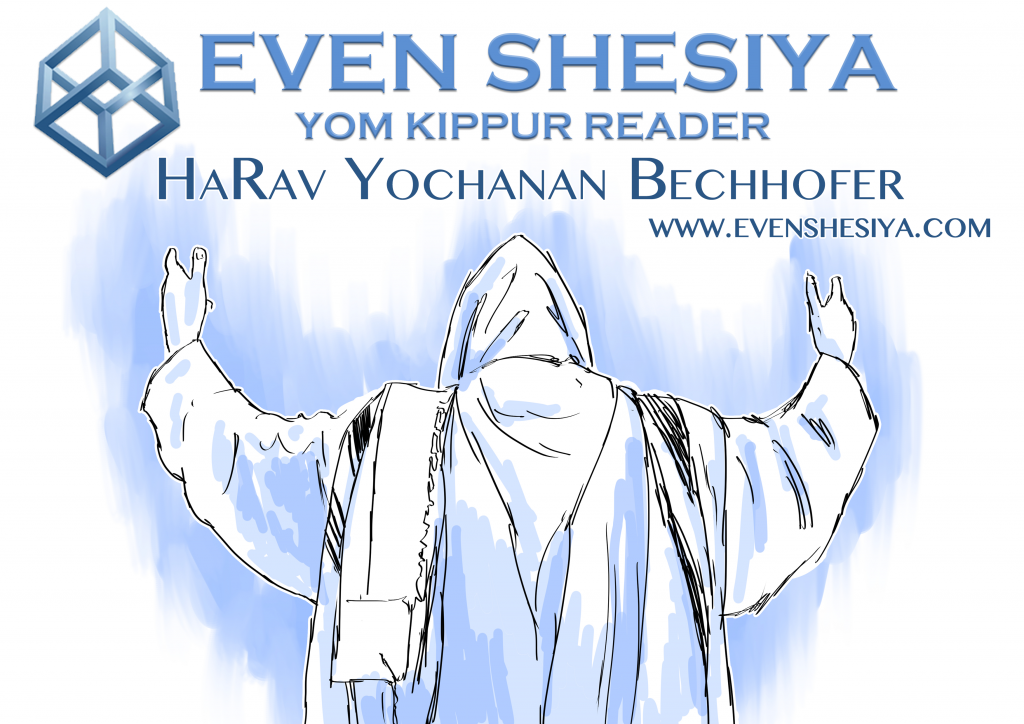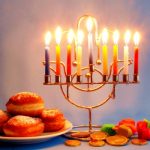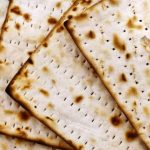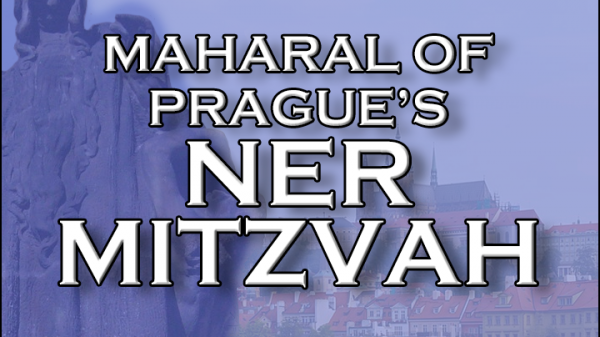Click here to download PDF (for single sided printers)
Click here to download PDF (for double sided printers)
ערב יום כיפור
General Introduction to Yom Kippur
The essence of Yom Kippur is that Hashem created for the Jewish people one day that Teshuva is easily accepted. On this day the sins are easily “erased”, which includes to fix all that has been damaged, to dispel all the darkness that was reinforced by sin, and to restore lost levels of Holiness and closeness to Hashem to all those who truly repent. On this day, a great light shines that has the power to make all this happen. However, for this light to be received and internalized, the Jewish people must keep all the Mitzvos that were commanded on this day, specifically the afflictions (no eating, no drinking, no washing, no enjoying oil on the skin, no shoes, no physical relations) through which they detach themselves from their bodily state and get elevated somewhat to the level of angels. All the detailed laws of Yom Kippur are parallel to the details of the great Tikkun that happens on this day (Ramchal, Derech Hashem 4:7:5).
The Mikveh
Amongst the many philosophical reasons for the purity of the Mikveh, is that when totally submerged in water, the person is subjected to the anti-properties of water. Water has two outstanding anti-characteristics. The first is that water is shapeless, formless, colorless and tasteless. The second anti-characteristic of water that is revealed in Lashon Hakodesh: there is no singular form for water. “Mayim” – water or “Mei”– water of are all plural form. The common denominator between these factors is that water has no individuality. Water can impose these anti-properties on others, as water dissolves even mighty stones. The most fundamental principle in the laws of Tumah is that for an object to be able to be מקבל טומאה-receive Tumah, it must have a שם כלי– be a designated, distinct object. Simple, unrefined objects that have no identity of their own do not absorb Tumah. This is the secret of the purifying power of water. When submerged fully under water, the waters strip the submerged object of its properties and it’s as if the old thing that had received impurity dissolved under water and what emerges from the water is a totally new object that has never been defiled that is only cosmetically similar to the defiled object that went in. The old object dissolved and what emerges from the Mikveh is totally new. Whenever we go to the Mikveh, we should view our old corrupted self with hearts of stone as having dissolved there and the person that emerges is a totally different person, reborn. This is a Kavanah for Mivkeh year-round, but it is especially apropos for erev Yom Kippur, as on Yom Kippur the whole world is submerged in a cosmic Mikveh as we will explain.
Day of the Cosmic Mikvah
The Midrash Rabba on the first day of creation, when the whole world was still under water and there was just light and darkness, but no open space, addresses the issue why it says, ‘it was night and it was day, “יום אחד” – day one, as opposed to “יום ראשון” – first day. It offers two explanations. The first explanation is that Hashem was the only one in the world. “Day One” means day of oneness where there’s only one domain, the domain of Hashem. To further explain this: Under water there’s no difference between up, down, right, left, forwards or backwards. It’s all the same non-space of “under water”. Water has no properties and negates the properties from all that is submerged under it. In that pure water-world, there was only the potential for everything, but nothing existed yet in actuality. Even the light and darkness could not actually shine on anyone or obscure anything for anyone because there was none other than Hashem, as there was no open space for anything other than Hashem. It was like the whole world was in one big Mivkeh. “Hashem was One in His world”, there was no other domain; just potential, but nothing in actuality other than Hashem Himself.
Yom Kippur – back to day one
The other explanation that the Midrash offers is that it’s an allusion to “the one day of the year that Hashem gives both for the wicked and the righteous. And which is that? Yom Kippur”. Yom Kippur is called the one day because Yom Kippur is reminiscent of that pure world before anything branched “away from Hashem” to have the perception of its own actualized existence. However, Yom Kippur is even greater than that first day of creation because on Yom Kippur everything exists in full actuality but with that same sense of purity as “Day One” because on this day it is clear that there is no independent existence outside of Hashem. On Yom Kippur the whole world is in a grand Mikveh of Divine Glory. This is alluded to in the very last Mishna in Yuma: After Rav Elazar referenced the Pasuk regarding Yom Kippur, “Before Hashem you will be purified” (Vayikra 16:30) “Rebbe Akiva said, ‘fortunate are you Israel before whom do you become pure and who purifies you? Your Father in Heaven, as it says, ‘I will pour upon you pure waters and purify you’ (Yechezkel 36:25) and also says ‘the “Mikveh” – hope of Israel is Hashem’ (Yirmiyahu 17:13), [Rebbe Akiva says to read it as Mikveh – ritual bath]. Just like the Mikveh purifies the impure, so also Hashem Himself purifies the Jewish people”. On Yom Kippur, “לפני ה’ תטהרו”- before Hashem you become purified. Yom Kippur is to go back to a state like the whole world is under water in a huge Mikveh, except the “Mikveh” is the pure recognition of Hashem’s absoluteness that surrounds us from every side.
No other side
The Gemara (Nedarim 32B) points out “Hasatan” – the satan has a numerical value of 364. The Rishonim explain that there are 365 days in a year, therefore there is one day a year when the Satan cannot prosecute, and that day is Yom Kippur. The reason for this is as we explained: On Yom Kippur we are submerged in Hashem’s pure Divine power with the recognition that there is none other than Him. With that recognition, evil can’t exist, not even in the mind. Evil loses its foothold in existence because there’s no “open space”, there is no “separateness” for evil to stand. This is the power of Yom Kippur – it is the day of oneness, the “One Day for Tzadikim and Reshaim” because on this day there is no wicked versus righteous, all that exists is pure on this day and whatever is inherently impure is ejected from existence, as we will explain….
Viduy
As the Rambam writes, one must do Viduy before Hashem (Hilchos Teshuva 1:1). That itself is one of the elements of its metaphysical power. When you have the courage to face Hashem and ‘own up’ to what you did, Hashem Himself takes your file and is your prosecutor and judge and executor, and Hashem has more mercy than we can imagine. His mercy comes from His infinite power. If you confess before Him, He takes your file and He is merciful. Regarding someone who refuses to confess, the Pasuk says (Mishlei 28:13) “he who hides his evil doings will not succeed…..”. The Kabbalists explain that since he is not facing Hashem to own up what he did wrong, Hashem, will not take his file, but will actually hand his file over to the Satan, and the Satan is anything but merciful. The same Pasuk continues “…..but he who confesses and abandons [sinning] will be granted mercy” because Hashem will take his file and Hashem is merciful. (Ramak, Shlah HaKadosh).
Another aspect of the power of Viduy is in the Halacha that Viduy must be accompanied with Teshuva (Rambam Hilchos Teshuva 2:3). In a matter of fact, the obligation to say Viduy does not even set in until the person does Teshuva (Rambam Hilchos Teshuva 1:1). To confess the sin together with Teshuva in the heart is a synthesis of the power of Teshuva in the heart purifying the sin confessed to. The regret in the heart merges with the ill effects of the crime mentioned by mouth – one purifies and washes away the other. (Ramchal, Kitzur Kavanos).
Viduy on Yom Kippur
For these two reasons, when accompanied by Teshuva, Viduy is especially potent, powerful, and effective on Yom Kippur. It’s the day we stand before Hashem more than any other day of the year. There is no Satan on this day lurking to take the file. It’s also a day of Teshuva (see Rambam Hilchos Teshuva 2:7), with special energies that wash away the sin confessed to (see entry above “intro to Yom Kippur”). With the powers of the day, being both before Hashem and a day of Teshuva, he who confesses with Teshuva in his heart, will surely effectively wash away his sin. This is why we do Viduy as often as we can throughout all five Tefillos of the day, parallel to the five level of the Neshama (Nefesh, Ruach, Neshama, Chaya, Yechida). We confess from every angle of our existence. This is the secret behind the very special Halacha that there is on Yom Kippur: to say Viduy and confess even on past sins that you already repented for and confessed to! The reason is: if there are any ‘scars’ or ‘faint impressions’ left of those sins; Yom Kippur is the day to clean them. Even if you already did Teshuva and Viduy on theses sins on a previous Yom Kippur, every new Yom Kippur adds new Divine energies on top of the energies of previous Yom Kippurs so that we can clean deeper and more completely.
ליל יום כיפור
Kol Nidrei
It should concern any thinking person why we enter Yom Kippur on the heels of completing a communal absolution of our vows, which is the Kol Nidrei service (especially as most have already done Hataras Nedarim before Rosh HaShanah). There are deep ideas behind this but there is also a simple straightforward explanation that the Ramchal revealed in the Mesilas Yesharim when discussing Teshuva. In the chapter on acquiring “Zehirus”-watchfulness, the Ramchal writes as follows: ”……but Hashem’s attribute of mercy enables the sinner to have time [to correct his wrongdoing] and he will not be removed from the earth immediately upon sinning, and also the punishment [if deserved] will not be to the point of obliteration. And [the Divine attribute of mercy also dictates] that Teshuva would be given to the sinners in absolute kindness that uprooting the will to sin can be considered as if uprooting the action of the sin. That is achieved when the penitent acknowledges his sin and confesses to it and contemplates the extent of the evil that he has done and repents and truly regrets that evil with an absolute regret retroactively, that if he could set back time, he would have never chosen that bad path – like the regretting of a “Neder”-vow that he has total regret and he wishes and yearns that he would have never done that thing and he has great pain in his heart that the sin ever happened and he abandons the sin moving forward and runs away from ever being in that situation again. Behold! Uprooting the matter from his will is considered to him [by Divine grace] like uprooting the action in actuality and the sin is retroactively removed from reality the way the vow is uprooted [retroactively] and he attains atonement.” The Ramchal has revealed to us that Teshuva and “Hataras Nedarim”– uprooting Oaths and Vows work on the same principle – by oaths and vows it is the “Shuras HaDin” -line of the law but by pure Divine grace, Hashem applied the same Halacha to uprooting sins committed by the sinner. Just like regretting the vow retroactively, regretting that he ever made the vow in the first place, uproots the vow from this point and onwards retroactively, so also, if the sinner truly regrets EVER having wanted to sin, from the point of regret and onwards it is retroactively like he didn’t sin. This is one of the many reasons that we usher in Yom Kippur with Kol Nidrei, the power of a communal “Hataras Nedarim”: Yom Kippur is a day of Teshuva – Teshuva and Heter Nedarim work on the same principle.
Saying Baruch Shem Kavod Malchuso aloud
“All of Hashem’s energies, lights, and emanations that He sends us come from Hashem’s Oneness and absolute perfection. The end goal is that all creations will attain true perfection. However, Hashem’s wisdom has decreed that this true perfection will only be attained after all the events in destiny have played out and all the Divine energies designated for the world have been emanated. With the first Pasuk of “Shema Yisroel”, we acknowledge Hashem as the One and only true perfection and as the source of all these Divine energies that pour upon us. The final effects of the Divine energies that pour upon us is that Hashem’s Divine Name dwell upon the creations and His Holiness will clings to them, and direct them in accordance with His will. This is the state that all creation will attain at the end of all the events in destiny. In that state, Hashem’s Will is fulfilled, and His glory is magnified, and this is the “crown” that He gets from His creations. However, to date, this has only been completely realized by the spiritual entities, for they are pure and holy, and they truly follow Hashem’s Will at all times and Hashem gets glory from them. But in the physical creations, this has not been fully achieved because they are not yet perfect. They have evil mixed in their composition, which they haven’t been purified from. Hashem does not get glory from the physical world, as He should. This is why the angels can proclaim aloud “Baruch Shem…” ‘blessed be the Name of His glorious majesty forever’ for they are truly loyal subjects that give glory to Hashem and His majesty. The physical creations cannot say this praise because they are not worthy; the Divine Name does not dwell upon them properly and they do not glorify Hashem’s kingdom.
The exception to this was Yaakov Avinu at the time he departed from the world, surrounded by his holy sons that had no blemish and they adorned themselves with Hashem’s unity and proclaimed, ‘Shema Yisroel…..’, Yaakov answered, ‘Blessed be the Name of His glorious majesty forever’. We, on our own level, are not worthy to say this praise but we have the ability to say it because of our connection to Yaakov Avinu who attained this perfection and therefore we are allowed to say it, but only silently as we are not truly worthy. But Yom Kippur is different, on this day the Jewish people rise to the level of angels and can proclaim it aloud, just like angels (Ramchal, Derech Hashem 4:4:7 – see above “Day of Cosmic Mikveh”).
עבודת יום הכיפורים
One above Seven below
The idea behind the sprinkling of the blood, be it in the Kodesh HaKodashim, be it on the Paroches, one flick up and seven flicks down, and with every one of the seven flicks down, he mentions the one flick upwards: “one and one, one and two, one and three…..etc” The power of Teshuva is represented by the one flick up. We live in a world of sevens. The seven days of the week. The seven years to a Shmitta, the seven colors of the rainbow and the seven major personality traits of: kindness, might, glory, eternality, splendor, foundation and kingdom. The divisibility of these forces and traits is what can cause them to veer off course and be used for wrongdoing. The unifying force of everything being focused for the sake of the Name of Heaven is also the purifying force of raising these energies up and connecting them to their ‘highest common denominator’. This ‘highest common denominator’ is the great light that shines on this day. The one flick up represents the Heavenly power revealed on this day which is also a unifying force. In unity there is purity because unity is a revelation of Hashem’s Oneness that negates evil from existence. After revealing the One above, each one of the details below has to be connected with that highest common denominator and therefore “One and one, One and two, One and three…. Etc”. (Ramchal, Maamar Hachochma).
לפני ולפנים
The Avoda of going lifnai v’lifnim needs to be understood. What is its function? Why is it deadly to go in there year-round? Even on Yom Kippur, only the Kohen Gadol, if he is worthy, and only with the Ketores and with the blood of the appropriate Korbanos. Why did the Tzedukim insist on putting the Ketores on the coals outside before walking into the Kedosh HaKedoshim? What’s the significance of doing it the right way of the Ketores put upon the coals only inside? As we have explained, Yom Kippur is the day where the world gets purified by standing before Hashem -“Before Hashem you will be purified”. The whole world goes into a cosmic Mikveh of being submerged in the pure energies of Hashem and it becomes abundantly clear, He is what is real, there is none we realize the absolute Oneness that we profess when we say, “Shema Yisrael Hashem Elokeynu Hashem Echad” – in other words: Yom Kippur is when “Shema” meets “Baruch Shem Kevod Malchuso” in perfect harmony and that’s why we say “Baruch Shem” equally out loud as “Shema Yisroel”. To make that merger, the Kohen Gadol as an agent for the Jewish people goes into the Kodesh HaKodashim- “Hashem’s place”. The other space of the Beis HaMikdash is shared with man. This is called to the exclusively “Hashem’s place”. In the first Beis HaMikdash there was the Aron that represents where the Shechinah rests. Chazal tell us they had a tradition that there was a spatial distortion there – the Aron didn’t take up space because there was no way to contain it within the Kodesh HaKedoshim with the wingspan of the Keruvim. Just seeing that spatial distortion could drive a mortal man insane, and parallel to that the sheer Holiness was more than any mortal body could withstand. Even in the second Beis Hamikdash where there was no Aron, there was the “Even Shesiya”- the rock from which all of space branched out from. Both illustrate the idea that the Kodesh HaKedoshim is the point beyond space as we know it. We are going back to the point of origin of space, like when the whole world was under water. It’s where our universe merges with Hashem’s majesty and that contact is purifying; like going into a Mikveh.
Shedding our sense of ‘self’
We have to ‘lose ourselves’ to be worthy of this connection. We have to shed any sense of being separate from Hashem, not just the separateness of being sinners and as if being G-d forbid being on the other side of Hashem’s law, but even as being law-abiding citizens, we have to totally annul any sense of self and totally surrender ourselves to Hashem to dissolve ourselves within His majesty and that is the purification – “before Hashem you will be purified”. This willingness to give everything just to have the honor of serving Him is called to serve “Lishma” – to serve Hashem for His own sake. As is well known, this is what Antignus Ish socho taught “serve the mater unconditionally without expecting any reward” (Avos 1:3). He had two students, Tzadok and Baysus, that couldn’t handle this idea, so they rejected it and the Torah She B’al Peh that teaches this truth. They wanted a business relationship with Hashem. You do Mitzvos and you get paid. In a business relationship there are definitely two different sides that are doing an exchange. We don’t want there to be two different sides. We want there to be only one side – to be on the side of He who is One. This is what it means that the Tzedukim would do the Ketores outside of the Kodesh HaKedoshim: on their terms, doing their own thing, manufactured on their own turf – and they wanted to bring it in to the Kodesh HaKedoshim as a business deal, expecting blessing in exchange for the incense that they were offering. We do the Ketores INSIDE the Kodesh HaKedoshim after having negated ourselves and surrendered ourselves totally to Hashem, there we serve Him. We are not serving Him to get anything for ourselves, we are serving Him for His own sake and that’s what it means “to serve Him on His turf on His terms”. That’s the beauty of the Avoda done “lifnai v’lifnim” – there’s the bringing of the blood which represents the spilling of our blood out to Him, the willingness to sacrifice, – and the “Ketores” – which in Aramaic means to tie a knot. We are tied to Him. We don’t want there to be “us versus Him”. We just want there to be Him and His majesty. We will connect to Him as being part of His majesty and this act of entering the Holiest of Holies is putting this into full actuality. This is to put into action pronouncing out loud Baruch shem Kavod – as it unites with the message of Shema Yisrael Hashem Echad.
The Seir Le’azazel
The scape goat that is thrown off the cliff is one of the most difficult to understand services of Yom Kippur. It starts with two goats that are exactly equal in height and in appearance. By “Goralos” – drawing lots it has to be decided which one is a Korban to Hashem and which one is thrown off a cliff, technically offered to the Satan himself, which is only permitted because the Torah directed us specifically to do so on Yom Kippur (any other time and under any other circumstances it would be the idolatry of satan worship!). What is the meaning of this? And why by lots? The two identical goats represent a problem that we will face in ourselves. We have a Yetzer HaTov and a heart for all the good things and we have a Yetzer HaRa and a heart for all our vices. The question is: which is the real “me”? Year round we live a “Jekyll & Hyde” type of existence, sometimes choosing good and sometimes choosing bad. On Yom Kippur it needs to be clarified that the “me” that chooses the good is the “real me” and I choose bad only when I am confused and misguided. The justification for us to make that declaration, even though we did the good and bad equally by choice, is that on Yom Kippur we are doing Teshuva and expressing remorse for ever having chosen the evil in the first place (see entry on Kol Nidrei). However, it’s easy to declare that. It can also be that later in the year after the awe and fear of Yom Kippur wear off, we will again choose bad, which will call into question the sincerity of the regret that we claim we had on Yom Kippur. What gives substance to this declaration that “the “real me” is the good that I choose, and the bad things that I’ve done do not reflect who I really am”? That is the function of the lots. We have to get above and beyond “choice”. In the world of choices, the options seem equally as real, and it’s near impossible to prove that our good choices are “more real” than our bad choices. All seem to be “equal in height and appearance”. In the merit of our genuine regret, Hashem gave us a service to demonstrate that sincerity and actually fission our good self off from our bad self with our “good self” remaining within reality and our “bad self” going off into oblivion. With the lots, that are above our choosing, Hashem is endorsing that He accepts our Teshuva and that we have successfully disassociated ourselves from our bad choices by sincerely regretting them retroactively.
Azazel – The Black Hole
Where does evil go when we eject it from reality? It can’t go to a different dimension – that would be a blemish in the wholesomeness of Hashem’s absolute kingdom. Evil should have absolutely nowhere to go. Where does it go? It collapses on itself. We say to the Satan: “you have stakes in us because you tempted us, and you got us to sin. We are now giving you whatever you own in us”. It’s being severed off our pure eternal essence that remains within Hashem’s kingdom. The evil then folds over on the Satan and the whole “sitra achra”-other side folds over itself and collapses out of reality like a black hole collapses on itself and cuts itself off from reality.
מנחה ליום כיפור
The laws of “arayos”?!?
For Mincha on Yom Kippur we read from the end of Parshas Acharei Mos where it talks about all the laws of forbidden relationships. Why do we read that on Yom Kippur? If it’s about reading further in Parshas Acharei Mos which has the laws of Yom Kippur, there is a whole section about the laws of how the Jews in the desert had to eat their meat as a ‘Korban Shlomim’ and the laws of covering the blood of kosher birds and wildlife which immediately follows the avodah of Yom Kippur. Why skip that and read the laws of forbidden relationships? What does it have to do with Yom Kippur?
Finding “Holy Space” today
Rashi meant it literally when he wrote immediately following this parsha: “Any place where there is safeguards against promiscuity, there in that place you will find Holiness”. This explains why we Lein the laws of the prohibition of promiscuity by mincha on Yom Kippur. When we do Teshuva, we’re meant to go back to Hashem – literally. In the words of the Rambam in the preamble to the laws of Teshuva: “The sinner has to return from his sin before Hashem and confess”. The Rambam says there in the first Halacha: “When a man does Teshuva and returns from his sin he must confess before Hashem”. On Yom Kippur, the great day of Teshuva and atonement, says the Pasuk “for on this day Hashem will atone for you, to purify you from all your sins before Hashem you will be purified”. that’s why the Kohen Gadol goes into the “Kodesh HaKodashim” to be before Hashem. What do we do in our day and age where we don’t have a “Holy place” to go to? The message of hope is wherever we are very careful and set up safeguards against promiscuity, there is our “Holy Space”! Just like promiscuity defiles not just a person, but also the space around him, and that’s why the land of Israel ‘vomits out’ the promiscuous – the opposite is also true! To the extent that you avoid any forbidden relationships and you have safeguards – there you will find Holiness. We read this Mincha time to remind ourselves and give ourselves the encouragement that you can find Holiness even in this era when we don’t have a Beis HaMikdash with all the Divine service, and we don’t go into the holiest of holies – we could still have being before Hashem and be purified by being in that “Holy Space” by setting up safeguards against any form of promiscuity. In the merit of Jewish modesty, there we can find Holiness and that will be our “holy space” that will give us the purifying experience that we used to get from the Kodesh HaKodashim on Yom Kippur.
נעילה
Neilah is the highest point and end of Yom Kippur. The simple meaning of why it’s called “Neilah”–locking, is because the gates of Heaven that were wide open, enabling not just a portal, but even a merger between our world and the realms that are called “Hashem’s place” are being closed and locked. It is also the time of the “seal on the decree” which means the entries in the books of the living and the dead are no longer malleable and easy to edit. It is sealed and it becomes much harder to change because it is no longer ‘in the making,’ but rather made (How things can still be altered until Hoshana Raba as the world has not ’hardened’ in its new state, will be explained in another publication). But there is also a positive side to these terms “locked” and “sealed” – because if we have truly purified ourselves and incorporated ourselves into Hashem’s glorious majesty, at the time of “Neila”, that lofty position gets “locked in”. That great achievement becomes a part of our eternal history and shapes our destiny so that the Jewish peoples’ survival and eventual destination to Olam HaBa is ensured. In the individual, the “seal” could also mean like a seal and a brand upon us as in the Pasuk “place me like כחותם – a seal on your heart” (Shir Hashirim 8:6). Yom Kippur leaves a permanent impression on those who used it correctly. Even if we’re not going to hold the level and even if we’ll fail at any time in the future, there’s something about Yom Kippur done right that is sealed and branded upon us forever and ever. Neila is not just the high point of Yom Kippur, it is also where we internalize the experience and it in turn sticks with us and ensures our eternality. This is the secret of what Chazal say that there are only two holidays that will be observed in the future – Purim and Yom Kippur. The Maharal explains that these two holidays ensure that there will be a future. Purim is that our enemies on earth fail to eradicate us, rather we eradicate them and therefore, we are the eternal nation. That’s on earth. There’s also a prosecution against us in Heaven above by the ministering angels of the nations and the Satan who is the administering angel of Edom and Amalek, in particular. They prosecute against us and declare us to be unworthy and try to get a death sentence upon us and on Yom Kippur we are saved. The Pasuk says,”“לדוד ה’ אורי וישעי – To David Hashem is my light and my savior”. Chazal explain – He is my light on Rosh Hashanah and He is my savior on Yom Kippur. On Yom Kippur we are saved from all the prosecution of the Satan. It’s not that we avoided a calamity for the moment, but rather, all the prosecution that piled up against us has been annulled and removed from reality. With every Yom Kippur, we offload any contamination that there is in us and any prosecution that there is against us. This is what ensures our eternality and that we will make it to Olam HaBa and our own sins will not destroy us. That’s why Yom Kippur is to be observed in the future, because Yom Kippur ensures our future.
The Great Reset
שמע
The service of Neila concludes with the grand cosmic reset that was building up in course of the entirety of Yom Kippur and that’s why the end starts with the grand proclamation of Hashem’s truth – Shema Yisrael Hashem Elokeynu Hashem Echad – Hashem is the one and only reality – is the most fundamental truth upon which reality is built – as the Rambam calls it “the foundation of all foundations and the pillar of all wisdoms”.
בשכמל”ו
The physical realm is now the purest it has been in course of Yom Kippur, so we proclaim ‘Baruch Shem Kavod Malchuso LeOlam Vaed’ out loud because we are truly at that moment Hashem’s glorious majesty because all has been totally purified. These three proclamations of “Baruch Shem….” are parallel to the three primary energies that creation is built on: Kindness, Justice, and Mercy (see Rosh Hashana reader entry on “Tekiah- Shevarim/Teruah-Tekiah”).
ה’ הוא האלוקים
After that we go to firmly connect the seven forces and characteristics that are parallel to the ‘seven sprinkles below’. All have to be firmly connected to Hashem’s Providence, so that these forces should always be in accordance with Hashem’s Will. We have in mind “Havaya” that the name that is only allowed to be pronounce in the Beis HaMikdash – Hashem’s place, is “Elokim”. The name “Elokim” means, master of all power. But anyone who has power is also called “Elohim”, like judges or people that wield power and influence. As we explained earlier, these powers could be so derailed away from Hashem’s Will to the point that they could be called “Elohim Acherim”- other powers – ‘אחר ‘- other, as opposed to “אחד” – the one and only real Master. We are putting that right. We are putting a seal and lock on these seven forces. Each one of the seven that falls under the purview of the name Elokim – and we are connecting each one with the Absolute Name of Hashem’s Providence, which is the Name “Havaya” (“Yud Key Vav Key”). We proceed to say for each one of the seven, “Havaya Hu HaElokim” – Hashem is the Master of all the powers, seven times for each of the seven forces in reality, which are also a declaration of Hashem being the Master over the seven principle forces of our human persona. And after all this, we have totally reset the world and the world emerges anew totally purified and we can pray, “L’Shana HaBa B’Yerushalayim” – Next Year in Yerushalayim. It is totally expected as we have ‘cleared the air’ for Hashem to reveal His presence in its proper place within earth, speedily in our days. Amen.












